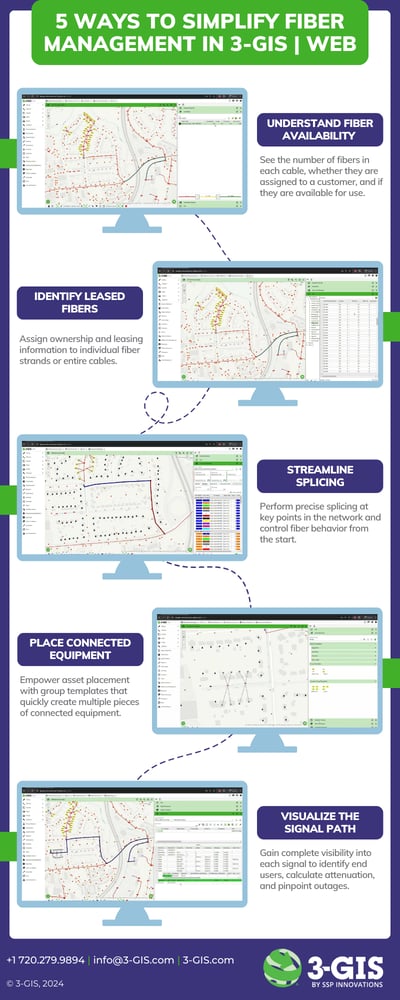 |
Infographic transcript:
5 ways to simplify fiber management in 3-GIS | Web
Understand fiber availability
See the number of fibers in each cable, whether they are assigned to a customer, and if they are available for use.
[Image of Availability tool showing assignment status of selected fiber cable]
Identify leased fibers
Assign ownership and leasing information to individual fiber strands or entire cables.
[Image of Info Panel showing leased status of fiber strands]
Streamline splicing
Perform precise splicing at key points in the network and control fiber behavior from the start.
[Image of Connection Manager showing existing fiber connections at a splice point]
Place connected equipment
Empower asset placement with group templates that quickly create multiple pieces of connected equipment.
[Image of Quick Placement showing available Group Templates and Complex Group Templates]
Visualize the signal path
Gain complete visibility into each signal to identify end users, calculate attenuation, and pinpoint outages.
[Image of Signal Trace showing the signal path of a single fiber] |